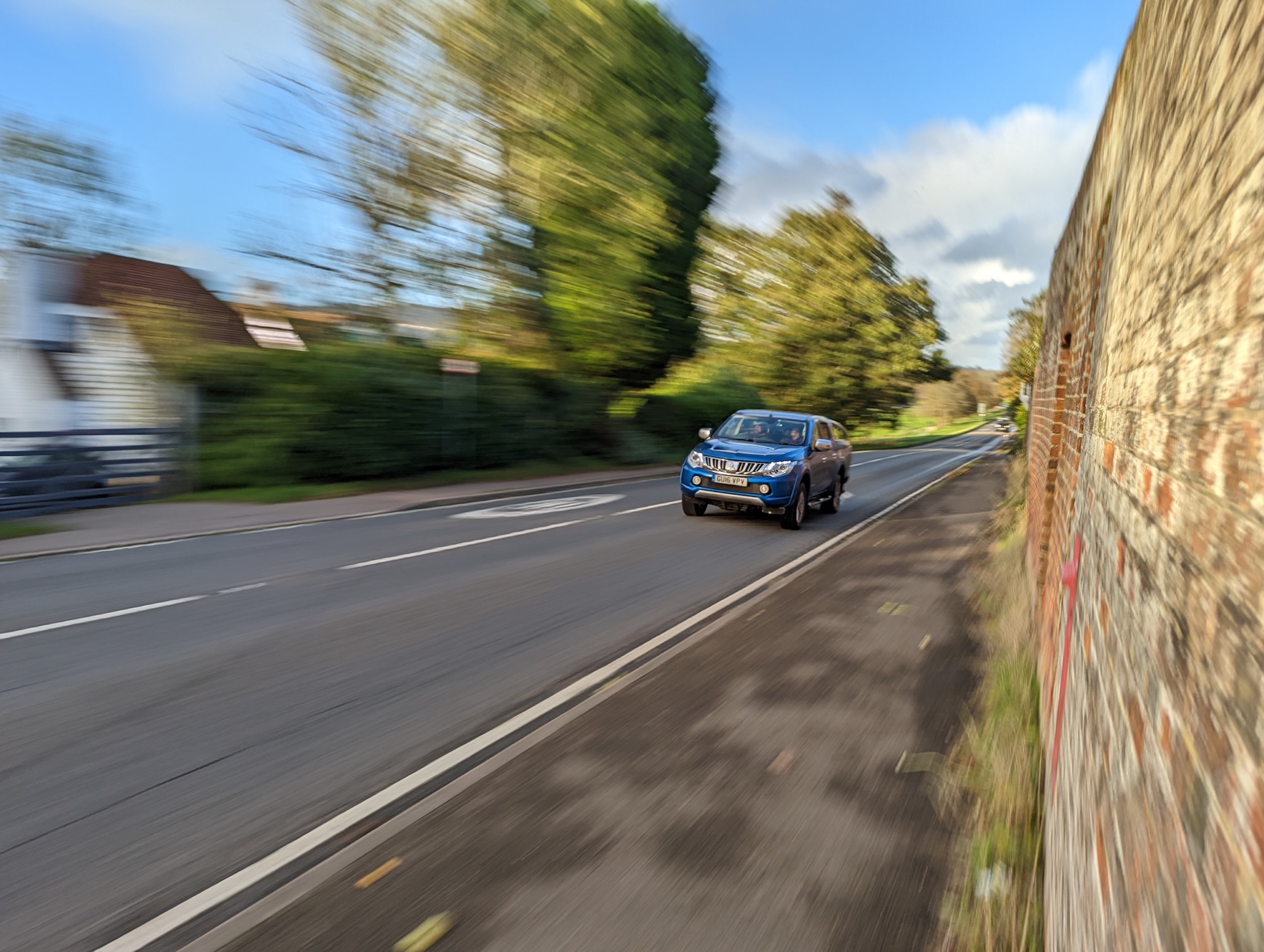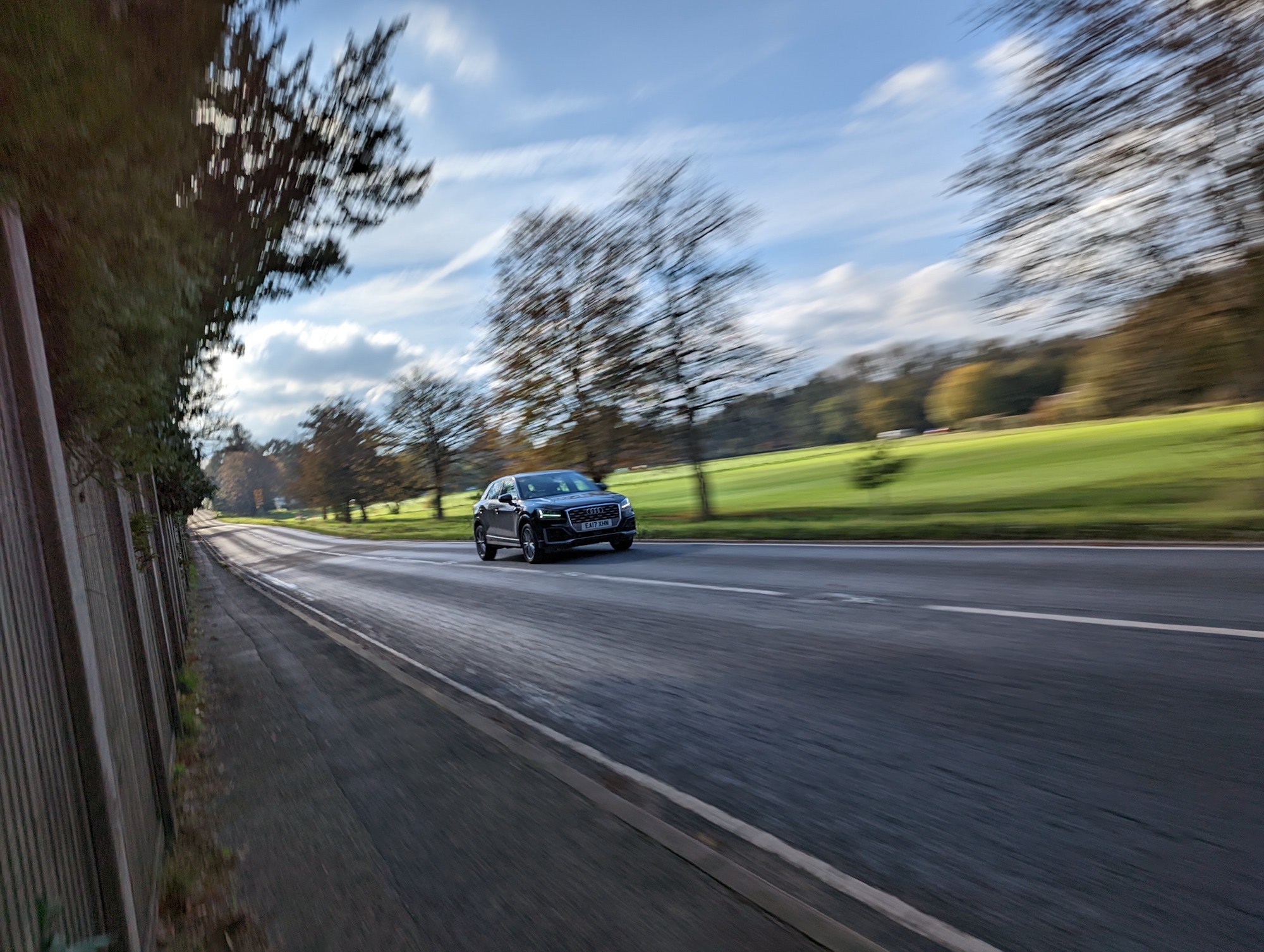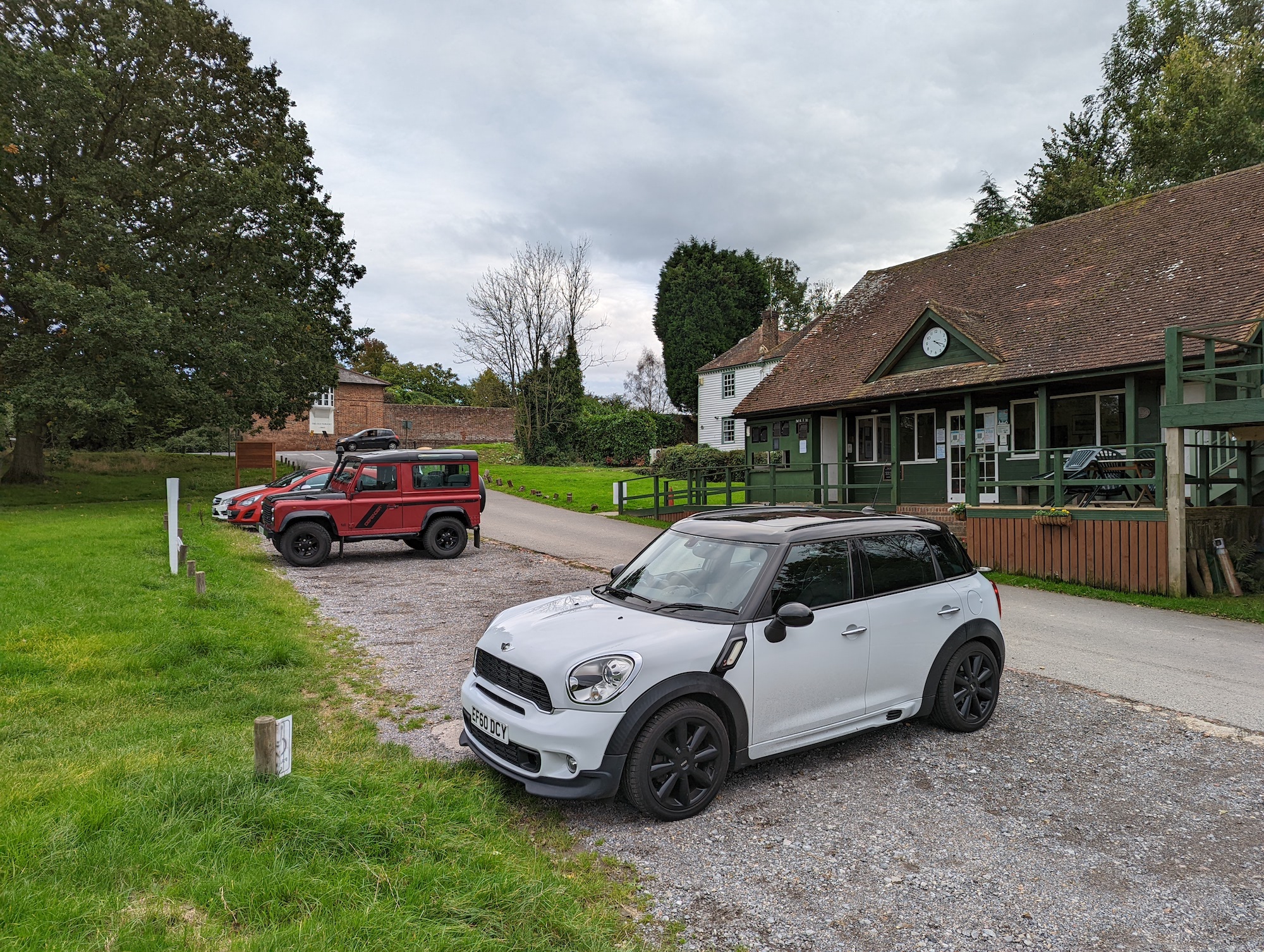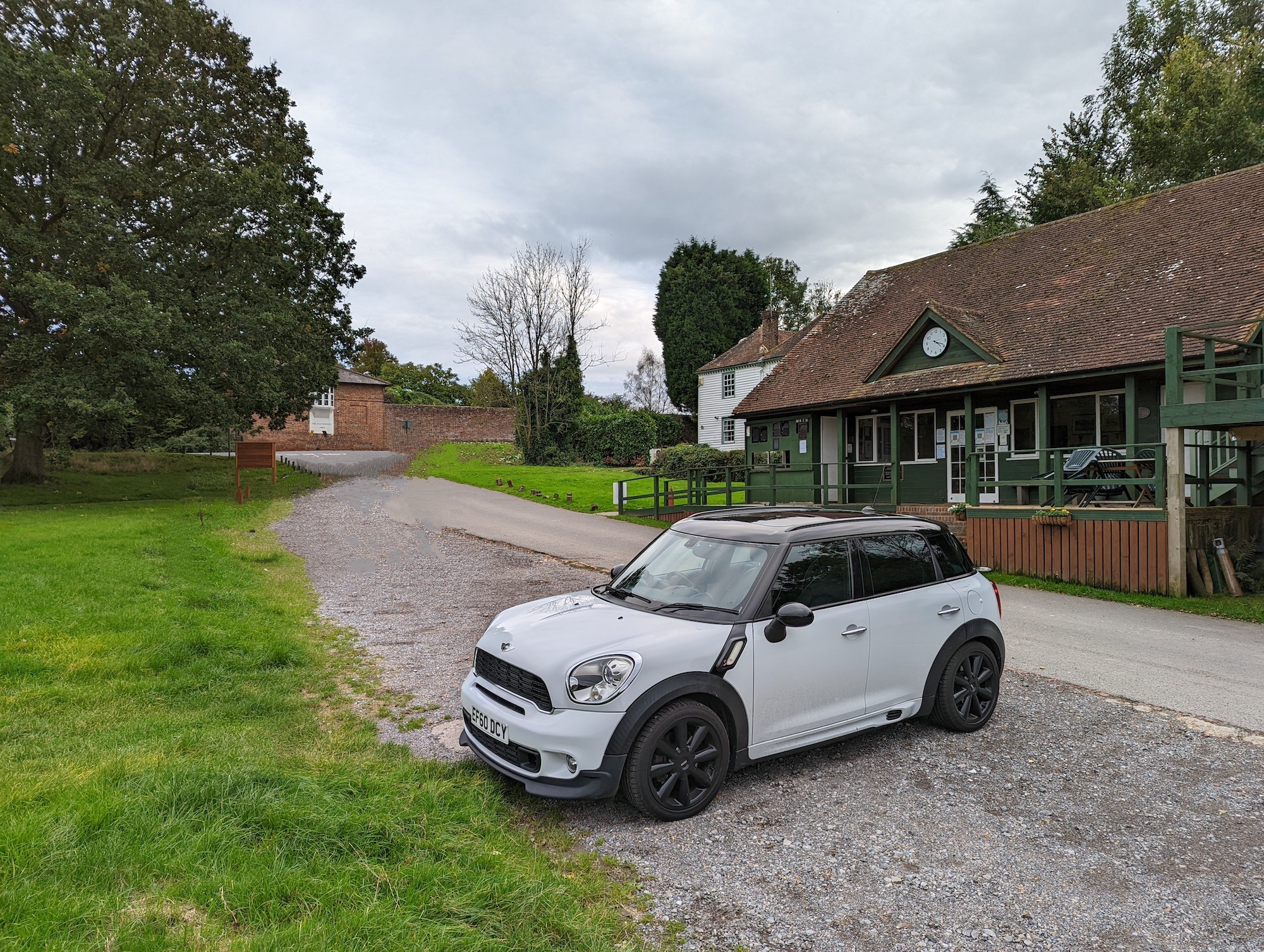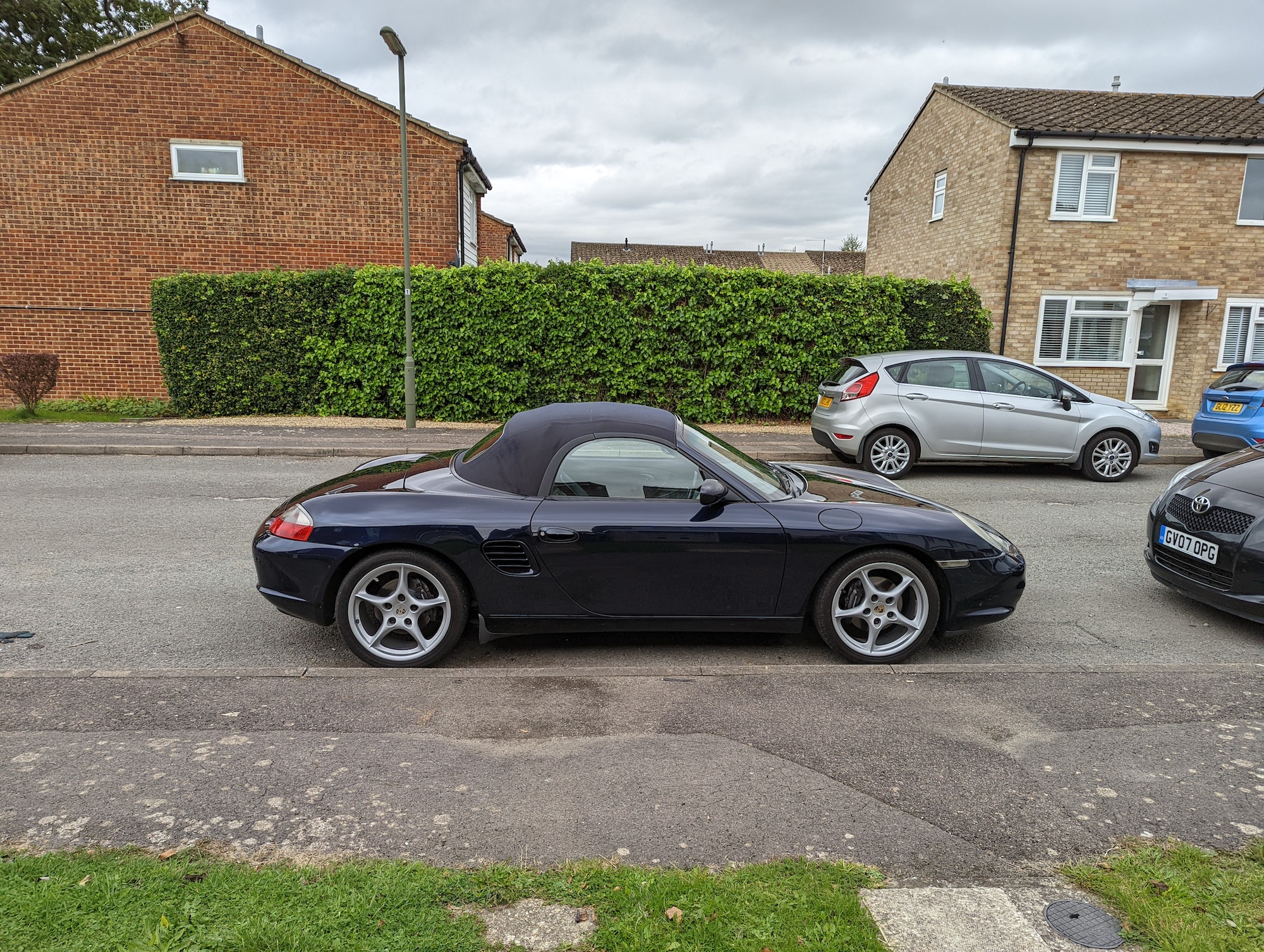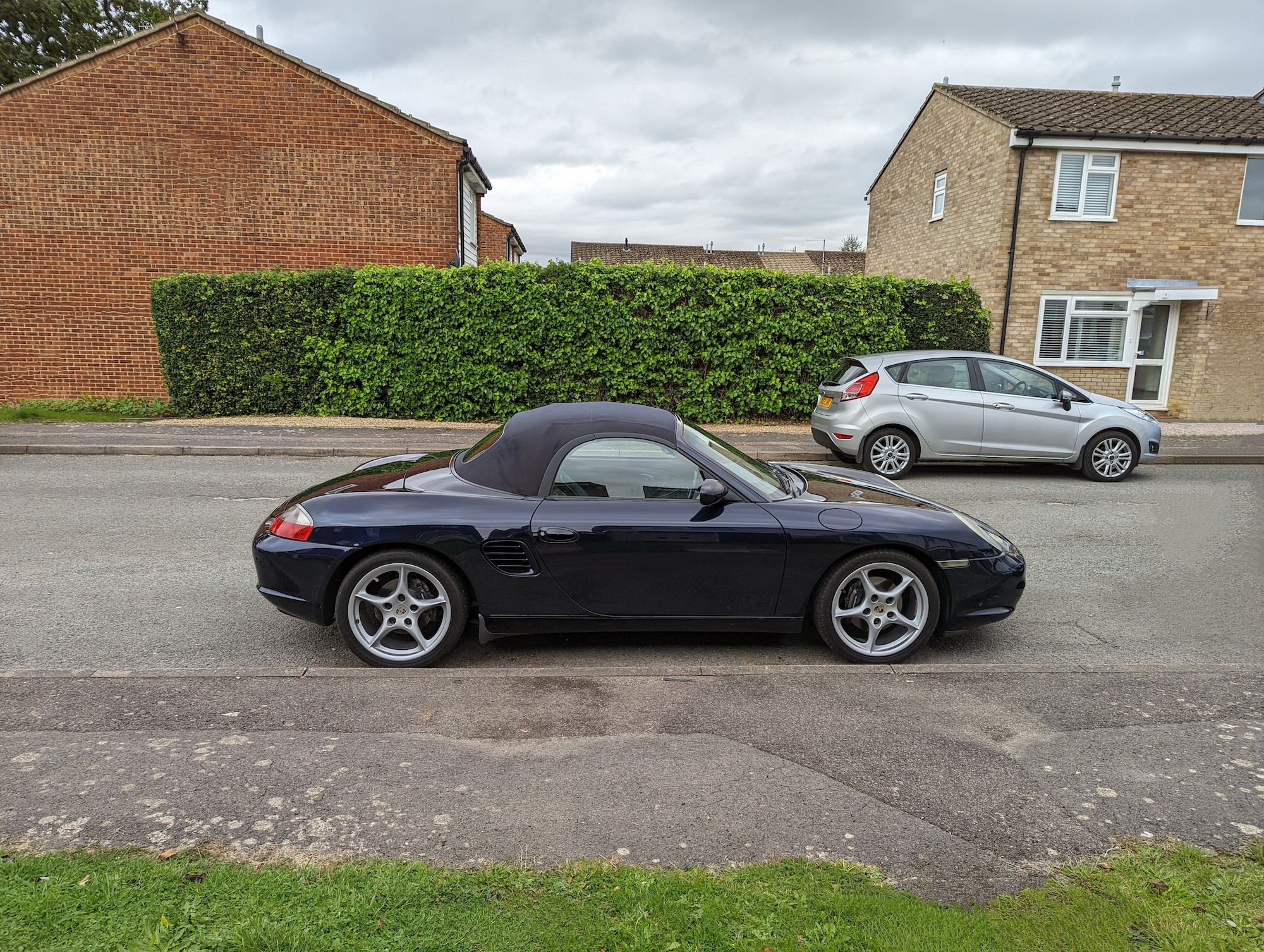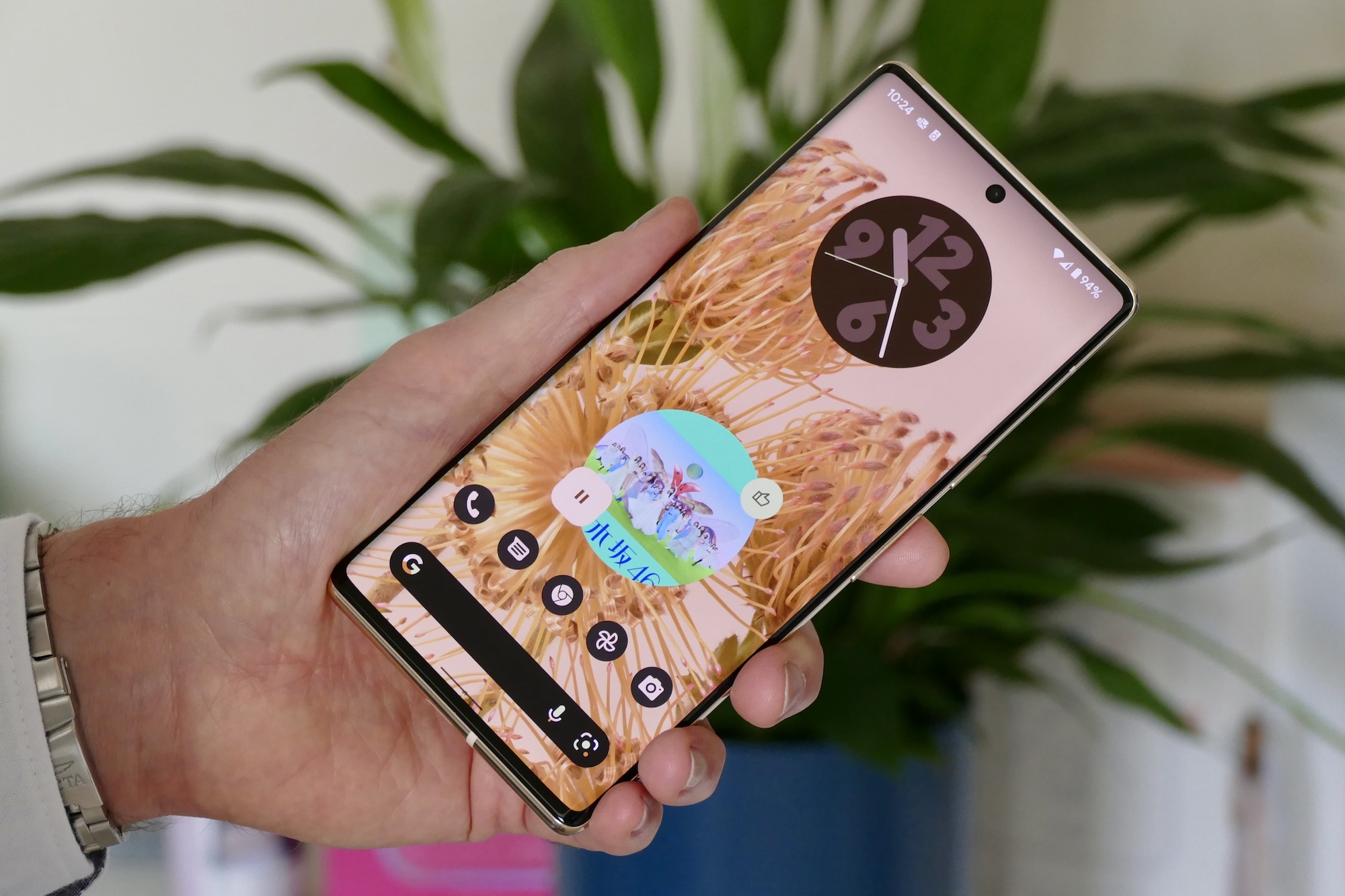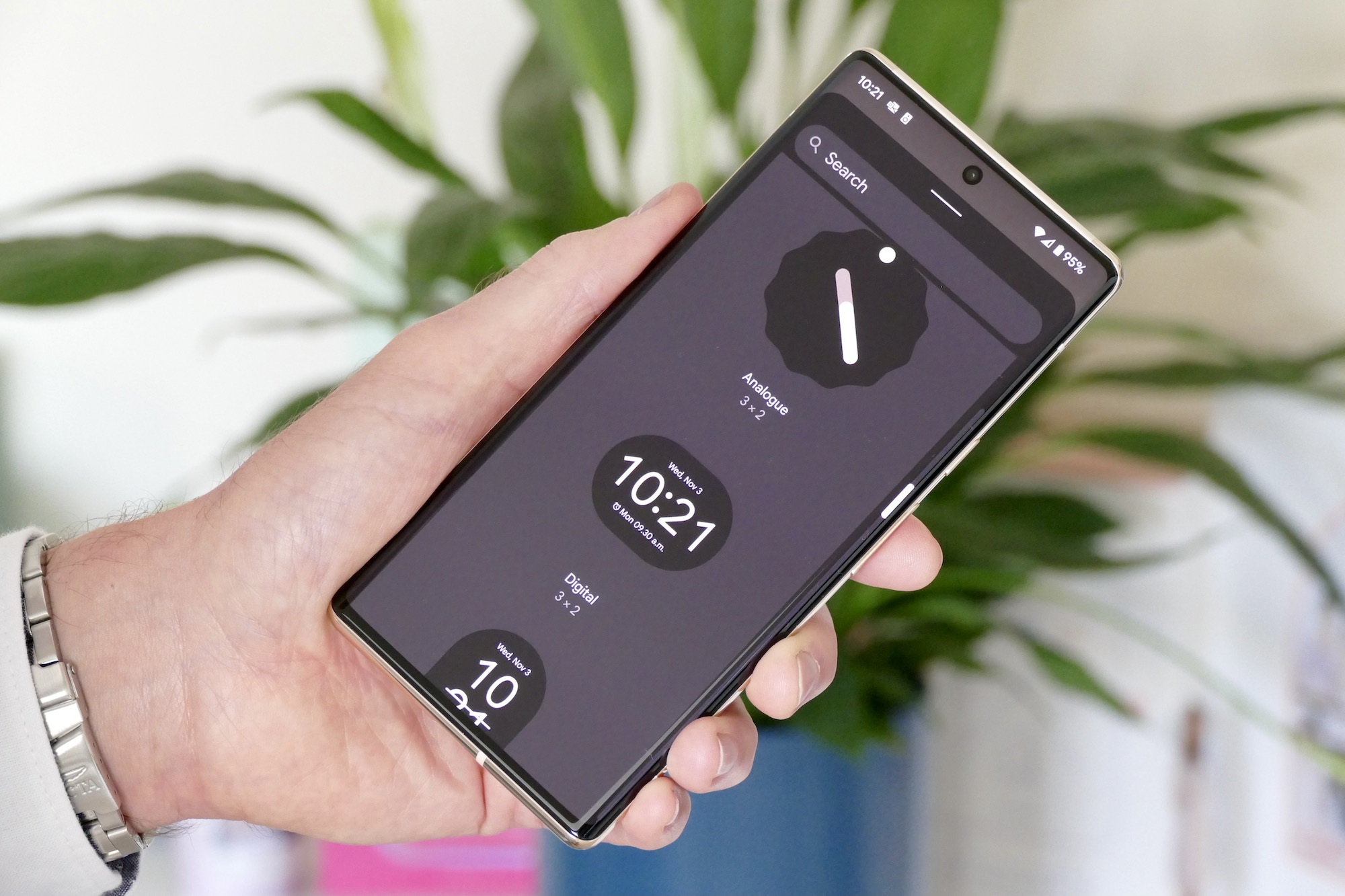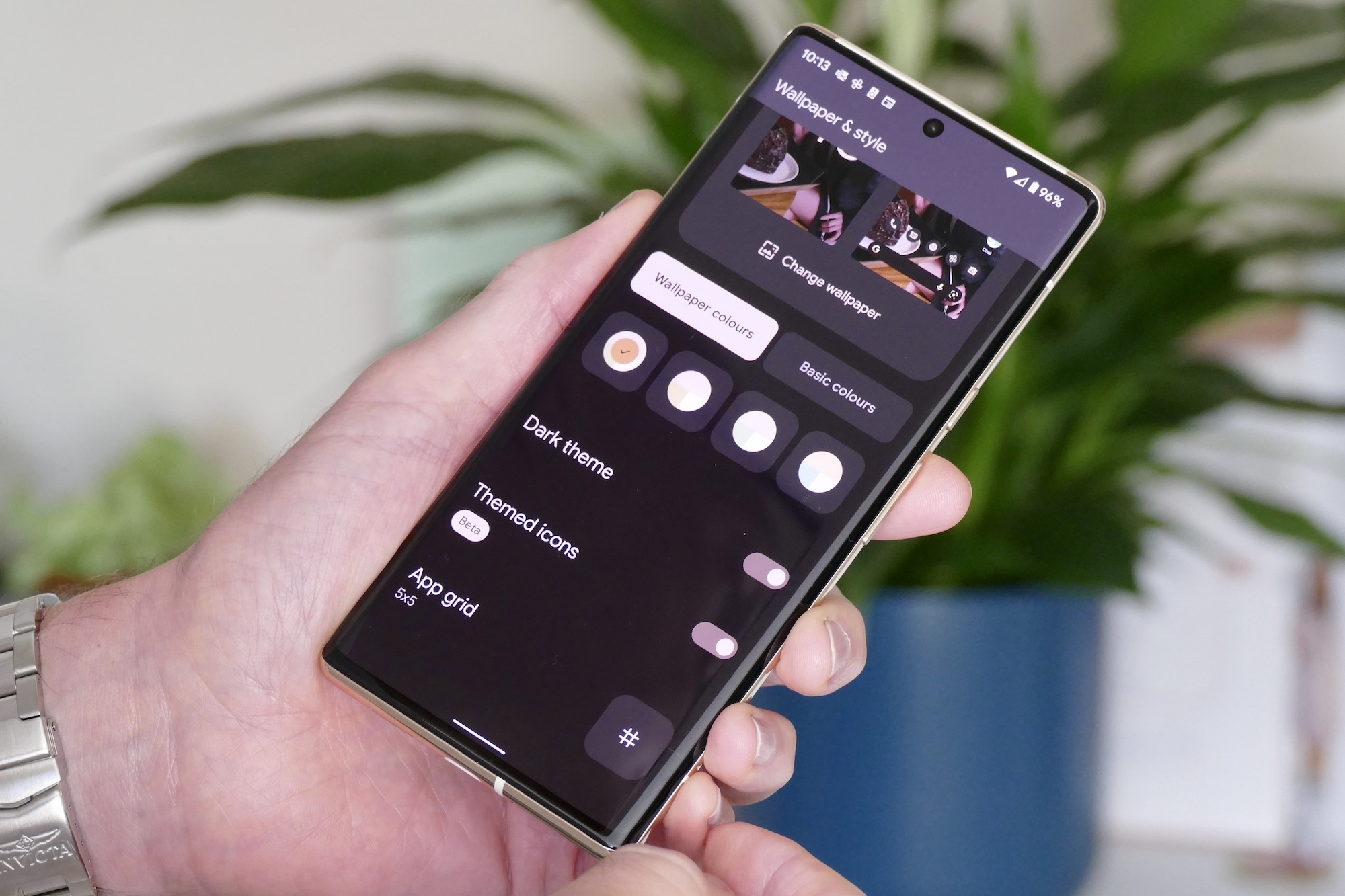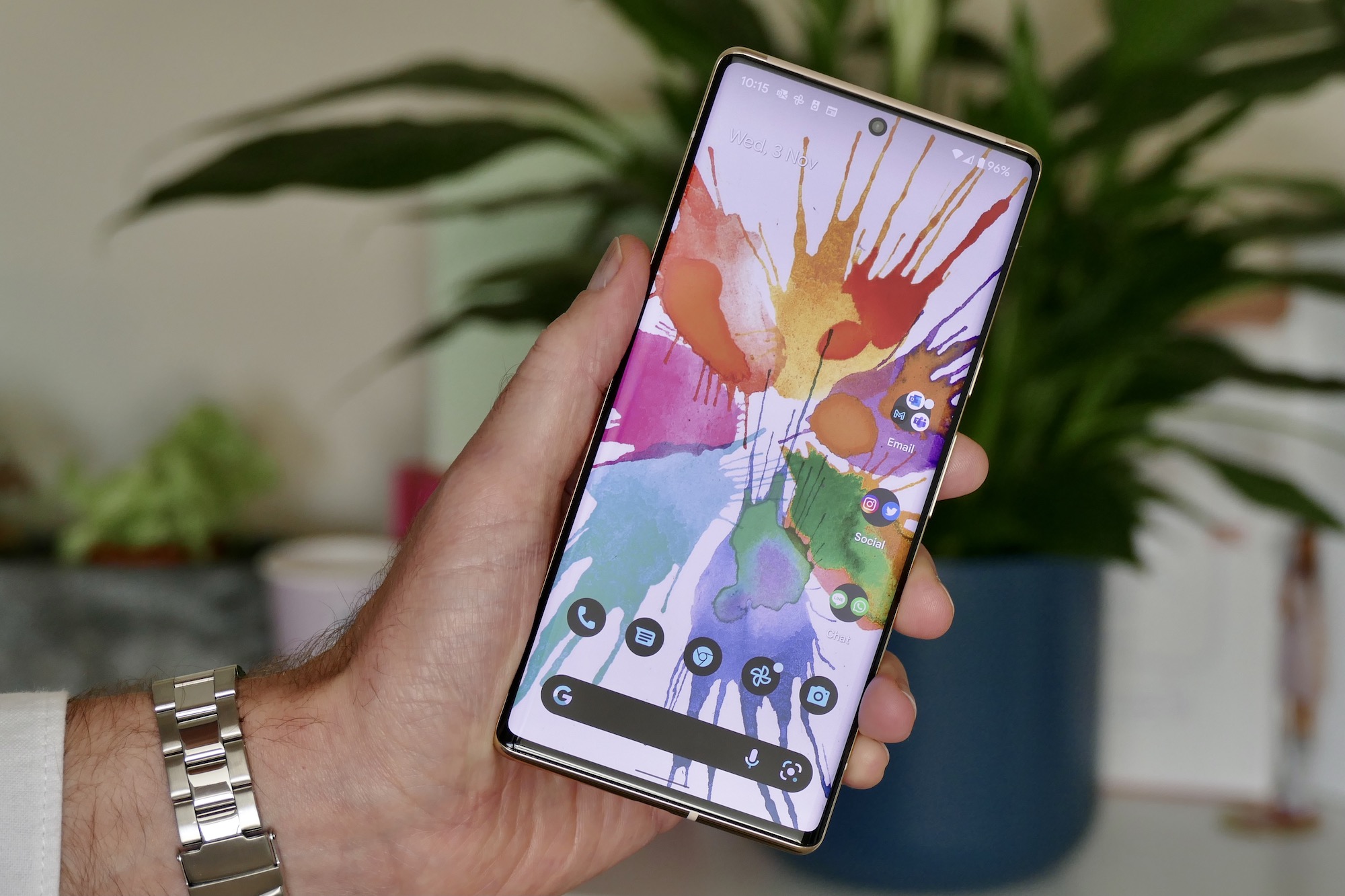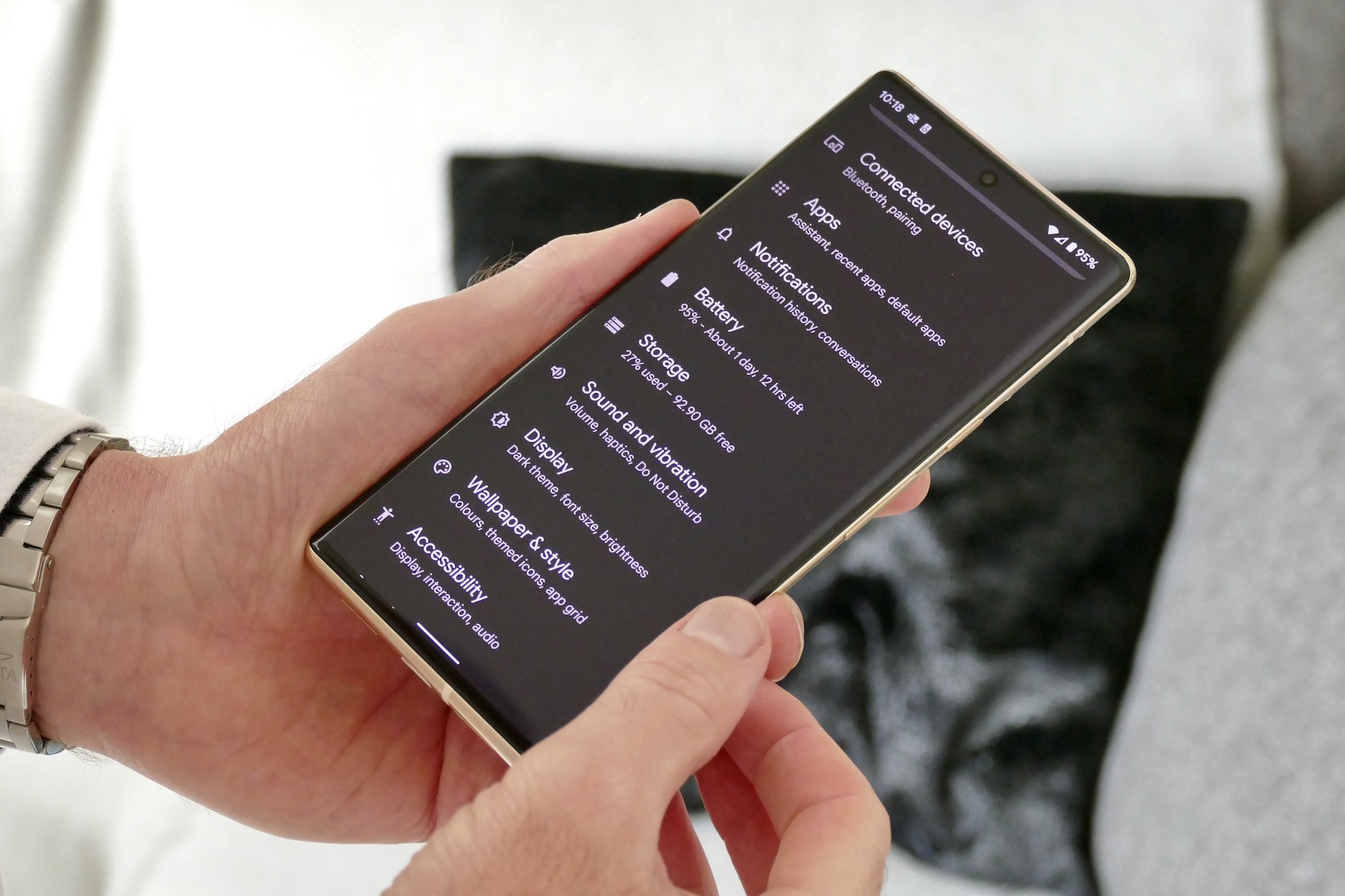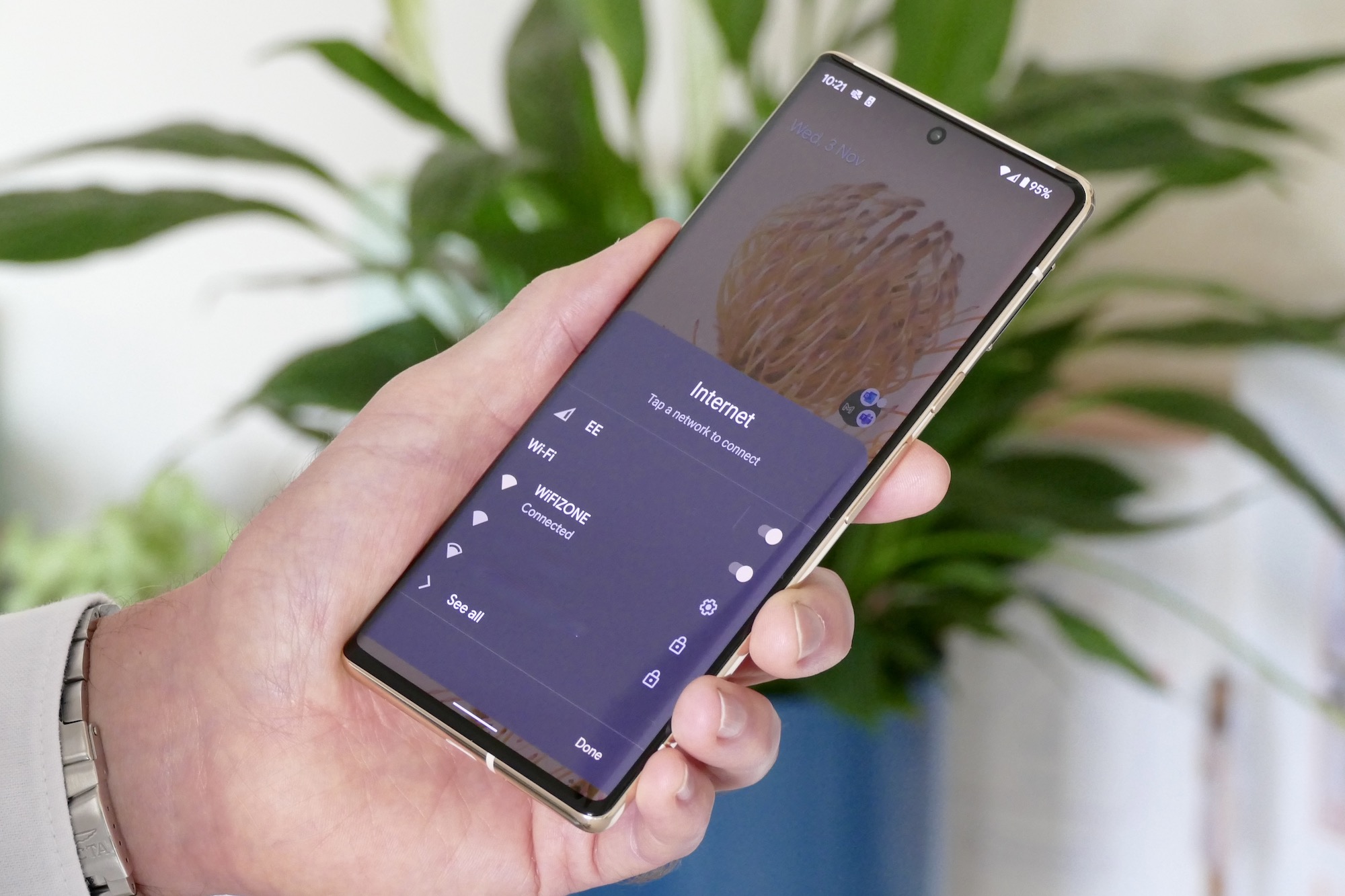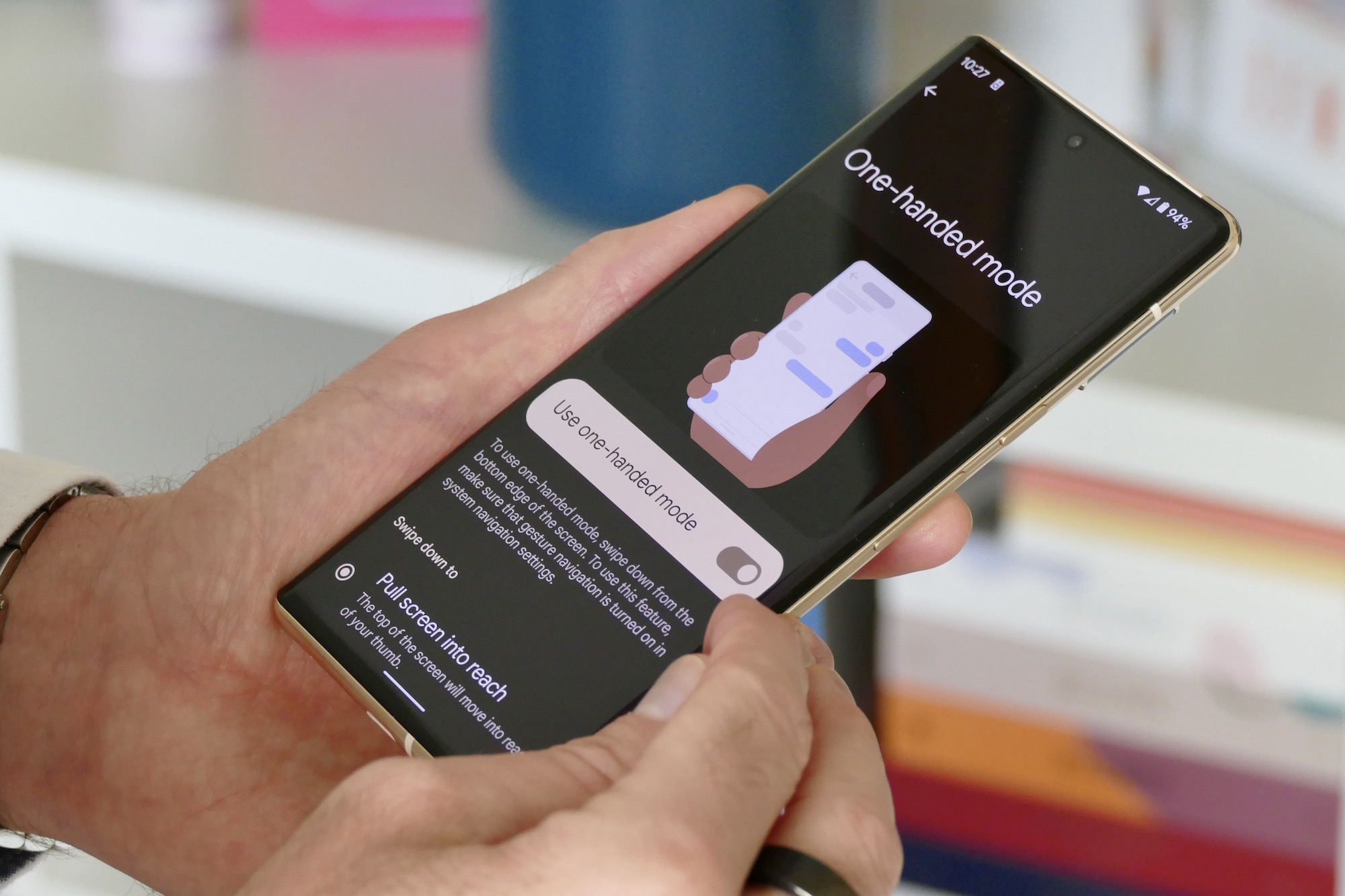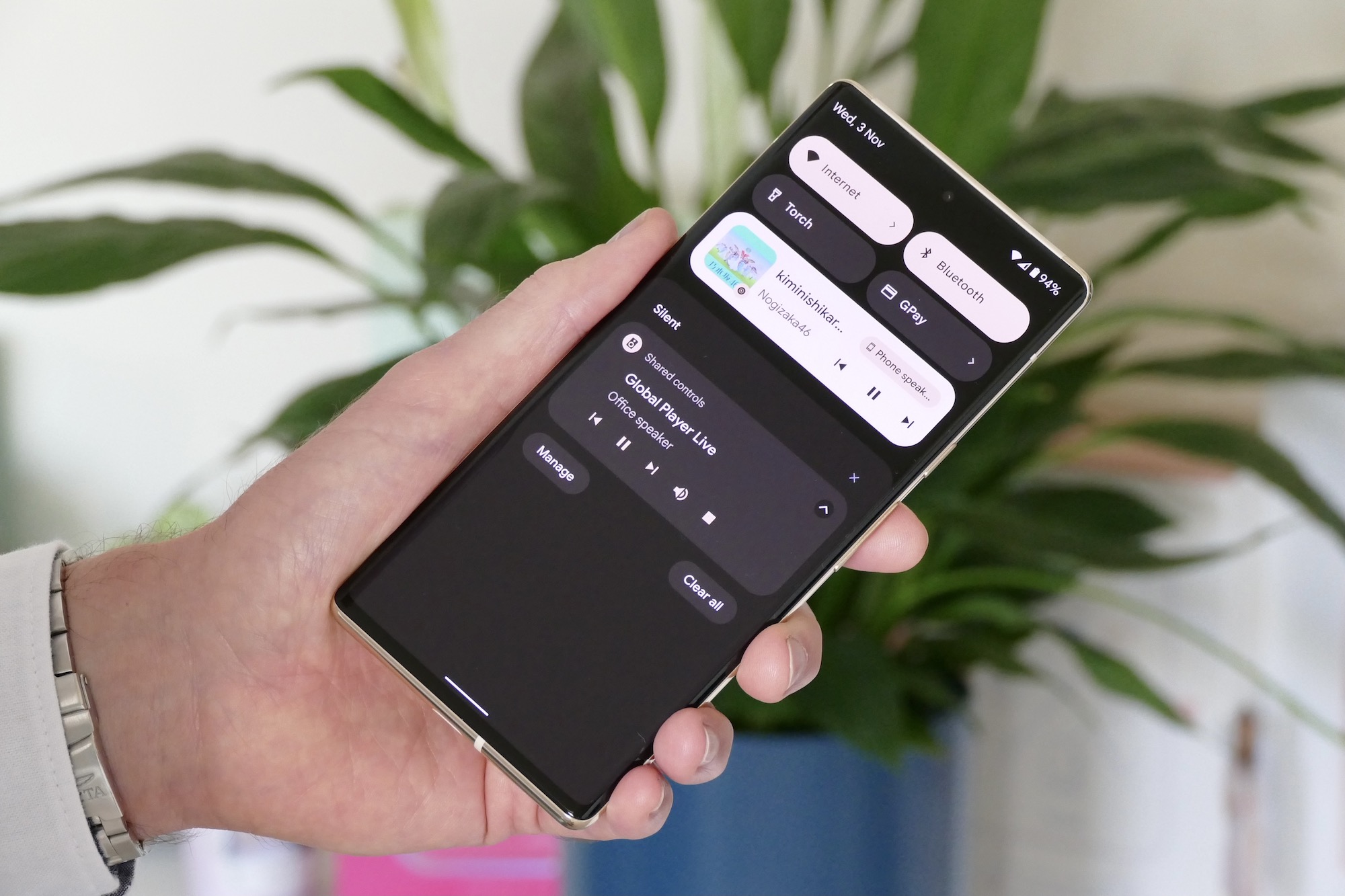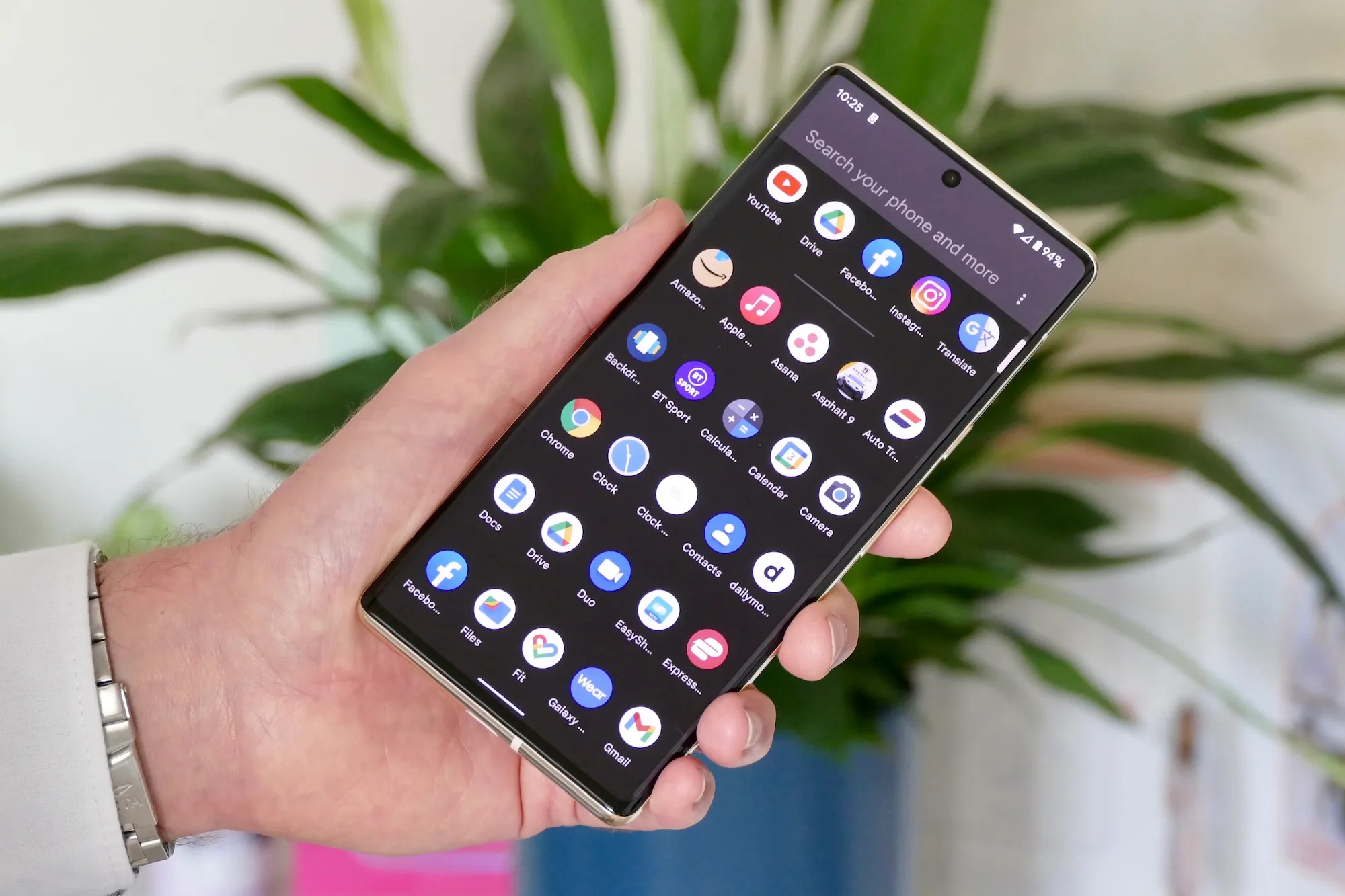“The Pixel 6 Pro has the best camera on a smartphone today, a vibrant screen, the latest and best-looking version of Android installed, and enough power and long-term support that it'll last you for years.”
- Incredible camera
- Fun camera features and editing tools
- Vibrant, colorful screen
- Android 12
- Long software support
- Unreliable in-display fingerprint sensor
- Flaky cellular connection in some situations
- 120Hz screen can jitter
The Pixel 6 Pro takes Google’s Pixel phone range in an exciting and much-needed new direction. By its third generation, Pixels had become midrange, boring-to-look-at smartphones for geeks and photo takers. The Pixel 6 Pro, on the other hand, is a flagship phone with a striking design and new tech inside. Plus, it has a fantastic camera, the latest software, and a price that won’t hit your bank account too hard.
Does this make the Pixel 6 Pro a phone for everyone, and one that can truly compete with the best from Apple and Samsung? Yes, but also not quite.
Design
What a fantastic-looking smartphone the Pixel 6 Pro is, with its high-fashion color scheme, quality materials and feel, and unique style that makes it impossible to mistake for anything else. After a stream of dull, purely functional mobile devices, Google has given the Pixel 6 Pro a design to match its clean and beautiful software. It’s up there with the best-looking phones released this year.

All done? Nothing but praise? Well, no. The Pixel 6 Pro is massive, and almost identical to the other monster phone of 2021, the Samsung Galaxy S21 Ultra. At 8.9mm thick, it’s not slim either, and the 210-gram weight means you always know it’s in your pocket. It’s far from being suitable for one-handed use. The metal and glossy glass don’t provide much grip either, so if you don’t hold it tightly, there’s the potential for a large, expensive accident.
Even when you’re not holding the phone, the potential for disaster is not removed, as the phone’s slippery nature means it has a tendency to slide about on many surfaces. A case is recommended to keep it safe, and I also found myself making sure it was screen up on surfaces, as the large camera module on the back can work as an anchor. The single, raised module strip stretches across the entire back and is covered in black glass edged with gold trim on the Sorta Sunny version in the accompanying pictures. This edging is raised slightly and may stop the glass and lens from getting scratched.
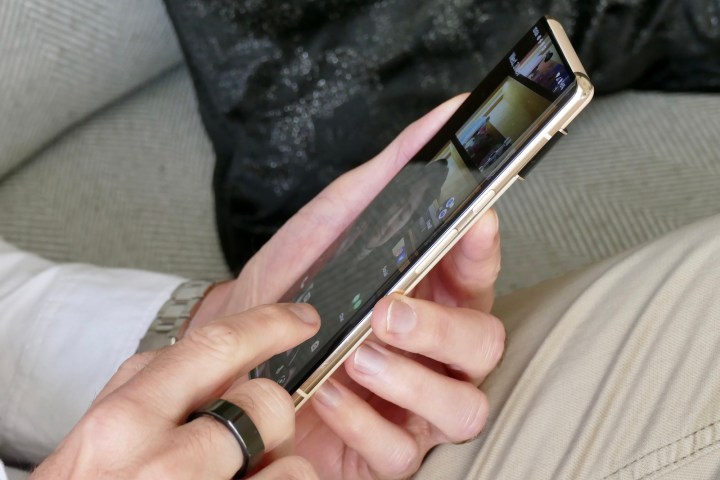
Being big and slippery is not something unique to the Pixel 6 Pro, but it’s a shame the non-Pro Pixel 6 isn’t much smaller, or any less likely to make a break for freedom as it’s made from the same materials. Unfortunately, the similarity in size means neither Pixel 6 phone will be ideal for someone who wants a small Google phone. During the last couple of weeks with the Pixel 6 Pro, I have finally adjusted to the size and weight of the phone, along with the quirk of the power key being set too high on the chassis. If you’re coming from a smaller phone, be prepared for the phone to not feel as natural as you may hope those first days.
Screen
On the Pixel 6 Pro, you look at a beautiful 6.7-inch AMOLED screen with a 19.5:9 aspect ratio, a 3120 x 1440-pixel resolution, and a 120Hz refresh rate that’s covered in curved Gorilla Glass Victus. This is where it differs from the Pixel 6, which has a smaller, flat screen with a lower resolution and a 90Hz refresh rate. The curve is subtle and doesn’t bend much screen over the phone’s sides, and it is mostly taken up by noticeable bezels.
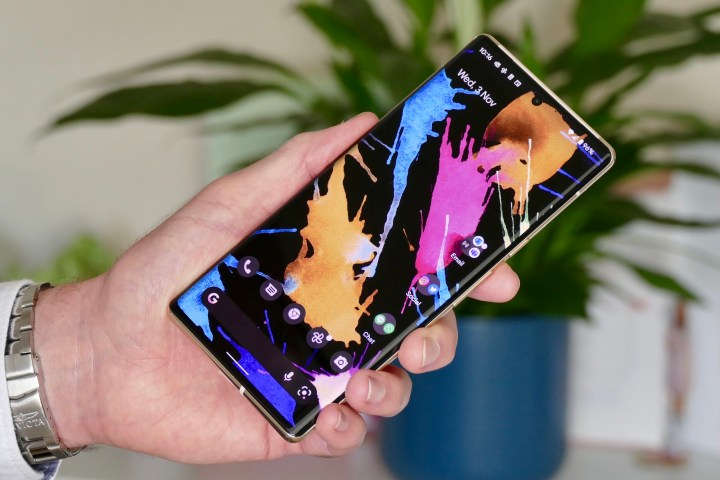
It’s incredibly bright with superb viewing angles, and you can watch video with the phone flat on the table without losing any quality or color. The viewing experience is extremely close to the iPhone 13 Pro, with just a slight reduction in contrast when you compare them directly. Watching Carfection’s video on the Ferrari 250 SWB reveals sublime colors and knife-edge sharpness. The Pixel 6 Pro is a video viewing powerhouse.
The stereo speakers are intelligently placed, with the speaker on the bottom of the phone accompanied by the main speaker at the top of the screen. Although sound is pushed forward, it still has a wide soundstage. It’s loud, but the bass is lacking, although the immersion from the clever placement of the speakers still makes the Pixel 6 Pro sound excellent in almost all situations.
The Pixel 6 Pro is a video viewing powerhouse.
All good so far, but there are two serious screen-related issues that have really frustrated me. The first is the in-display fingerprint sensor, which is rubbish. The problem is it’s slow and unreliable. I’ve reregistered my print several times, and it doesn’t change the situation. I’ve used my PIN code to unlock the Pixel 6 Pro more than any other phone, and there’s no face unlock available to bypass the annoying fingerprint sensor. I’ve worked around it a little with Android’s Smart Lock feature, where the phone stays unlocked when it’s in my pocket or when I’m at home. However, it’s not especially reliable, either.
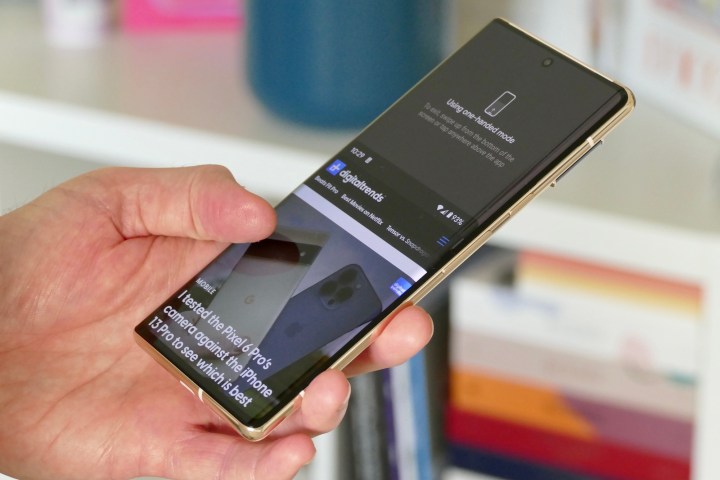
Secondly, there’s the 120Hz refresh rate. It’s switchable between 60Hz and 120Hz, rather than being dynamic like the screen on the Galaxy S21 Ultra, and while a lot of the software is very smooth, there are apps that simply are not. Twitter is an excellent example, as scrolling through my feed is like wading through mud compared to the iPhone 13 Pro. I am fairly sure this is a screen refresh issue because when I manually force a 60Hz rate, it scrolls freely, albeit with more blur. High refresh rate screens reduce eye strain and make viewing websites and scrolling content more pleasurable. This is not always the case on the Pixel 6 Pro at the moment.
Both these issues are at odds with the Pixel 6 Pro’s polished exterior design and not things you expect from a new, high-end flagship phone from a company of Google’s scale. The refresh rate inconsistency could be cured in a software update, and the fingerprint sensor’s unreliability may also be improved in the same way. However, for now, both are quite significant downsides that separate the Pixel 6 Pro from its more expensive rivals.
Camera
You get a 50-megapixel main camera, a 48MP telephoto camera with a 4x optical zoom, and a 12MP ultrawide camera. The Pixel 6 Pro also uses Laser Detect Autofocus, optical image stabilization on the main and the telephoto camera, and shoots up to 4K video at 60 frames per second (fps), plus there’ss an 11MP selfie camera in a hole-punch cutout at the top-center of the screen.
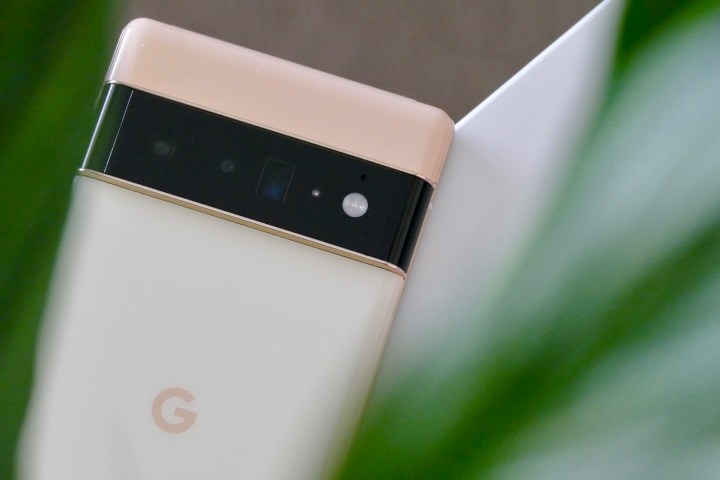
I’ve already directly compared the Pixel 6 Pro’s camera to the Samsung Galaxy S21 Ultra and the Apple iPhone 13 Pro, and it has beaten both these established camera superstars. Everything you’ve heard about the Pixel 6 Pro’s camera is true — it really is that good. Stills are full of life, color, and detail. I’ve yet to really find a situation where it takes a photo I need to edit much, if at all, before thinking about sharing it, and the range of cameras provides versatility so I can have fun and get creative.
It’s the simplicity with which you can take stunning photos that makes it so exciting. No matter whether it’s night or day — or if the subject is moving or stationary or near or far away — the 6 Pro sorts everything out for you. You just press a button and get a brilliant picture.
- 2. Wide-angle
- 3. Portrait mode
- 4. Pixel 6 Pro
- 5. Pixel 6 Pro
- 7. Pixel 6 Pro
- 8. Pixel 6 Pro
- 10. Pixel 6 Pro
- 11. Pixel 6 Pro
- 12. 4x optical zoom
- 13. 20x digital zoom
- 16. Pixel 6 Pro
- 17. Pixel 6 Pro
There are several exclusive Pixel camera modes to try. Action Pan lets you take photos with a blurred background motion effect, which is ideal for action shots of cars and other things moving at speed. You just take a photo as normal and Google’s software adds the speed effect. Long Exposure mode does the same thing, and you don’t have to track the object, but I haven’t found as many situations where it works compared to Action Pan mode.
Everything you’ve heard about the Pixel 6 Pro’s camera is true — it really is that good.
Magic Eraser is found in Google Photos, but only on the Pixel 6 or Pixel 6 Pro, and it works by digitally removing unwanted things from your photo. It’s effective and easy to use, and with a few swipes, random people and objects disappear from the background in your photos. It even works with old photos, and with photos not taken by the Pixel 6 Pro. It’s part of Google Photo’s extensive photo-editing suite, which goes far beyond just tweaking the HDR or saturation. You can even change the look of the sky in your photo with just one button tap.
Anything that’s not so great? The large sensor makes close-up shots difficult, and there’s no macro mode to compensate. I have also seen some odd distortion from the main camera where objects appear to be a different shape than they actually are. This aside, you get fun photo and video modes, transformative editing tools, and a camera that takes amazing photos regardless of your skill and the environment. The Pixel 6 Pro’s camera is currently the best you can get on a smartphone.
Software and performance
The Pixel 6 Pro uses Google’s new custom Tensor processor is paired here with 12GB of RAM. There’s the option of either 128GB or 256GB storage space. I’ve been using the phone normally, spent time playing Asphalt 9: Legends, and taken close to 500 photos over a couple of weeks. Through it all, the phone has been a top performer. I haven’t noticed any difference using the Tensor-powered Pixel 6 Pro compared to a phone with a Qualcomm Snapdragon 888 processor when it comes to general everyday use.

Google has used the Pixel 6 phones to debut Android 12. The biggest difference you’ll notice coming from another Android phone is the Material You design. It makes Android cleaner than ever before and a little more customizable, too, as the accent colors throughout can be set to match your wallpaper. There are some pretty new widgets of varying degrees of usefulness, with the YouTube Music widget being the most helpful for me, and the new clock widgets the most attractive.
The quick access buttons in the notification shade are larger, easier to press, and have new functionality. I can’t say they made any significant difference to my daily use, but they’re certainly pretty to look at. I like the “bounce” built into vertically scrolling pages in the operating system, but one-handed mode isn’t very good as it doesn’t let you scroll through the operating system and is instead made to use a single app. That’s not very helpful on such a big phone. I also like the Google Assistant Voice Typing mode, which fully works in Messages and WhatsApp, so you can type and send messages hands-free. It’s accurate and fast — I use it most days.
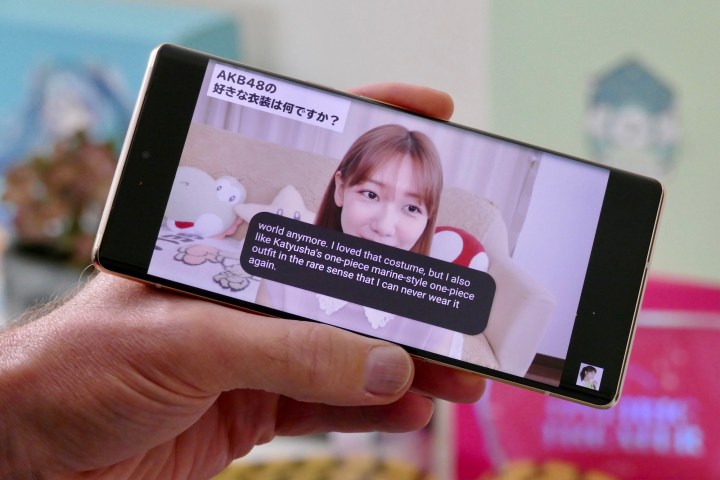
The Tensor chip is supposed to improve on-device translation of other languages, and it’s definitely faster than previous versions I’ve used on older Pixel phones. Live Caption adds text subtitles to videos in a few other languages, including Japanese. While watching one of AKB48 singer Yuki Kashiwagi’s recent YouTube videos, the translation was good enough to understand what’s going on, but it does take a while to hit its stride. It will still make errors, especially when the conversation is brisk, and will also totally mishear what’s being said, but it works well overall and is speedy enough to keep up.
Although I’ve read some comments online about Android 12 having its fair share of bugs, nothing stood out during my time with the phone, at least not related to general usage. It runs all the apps I installed, and hasn’t crashed or done anything that irritatingly interrupts my daily tasks. I’ve found the Assistant doesn’t always pass off instructions to Google Home, though, and will sometimes act upon the same commands, too. For example, Assistant stopped playing a YouTube video when I asked Home to stop playing a radio station.
I find Android 12 to be comfortable and speedy to use, but there is a small learning curve. Google doesn’t always surface cool features again once you’ve checked the intro guide. The helpful Pixel introduction cards that show up when you first set the phone up, guiding you to notable new features, will eventually taper off, and you have to dig into the Settings menu to activate them. It’s a shame, as you can miss out if you don’t take time to really learn how to get the best from Android 12.
Battery and connectivity
Equipped with a 5,000mAh battery, fast charging to 50% in 30 minutes with a USB-PD 3.0 charger, and Qi wireless charging, Google states the Pixel 6 Pro will last for about 24 hours before needing a recharge. After testing, I expect the Pixel 6 Pro to last at least as long as promised, and I’ve been quite impressed with the battery life considering the size and specs of the screen, and the 120Hz refresh rate being active all the time.
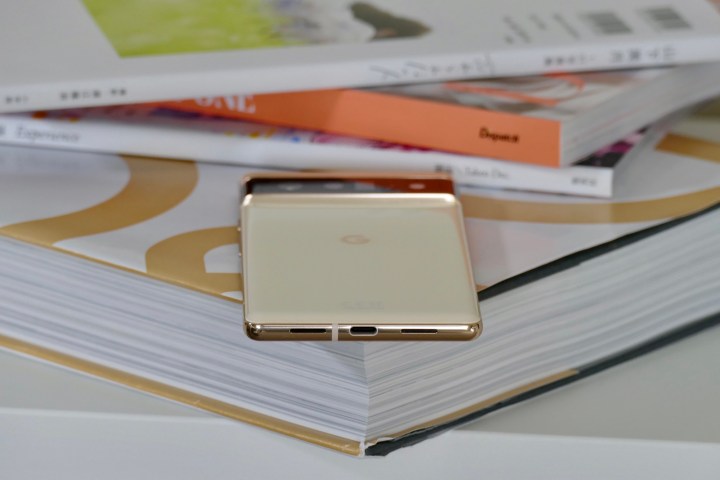
For example, on a single day with three hours of GPS use, a hundred photos taken, apps open, social networking, and a few other simple tasks, the battery still had around 30% remaining in the late evening. With light to moderate daily use, it’s been rare the battery has fallen below 50% at midnight. However, the phone took about two days and two charges to begin to adapt to my use, before which the battery worked a lot harder. Once that period of adjustment was over, the battery life improved a lot.
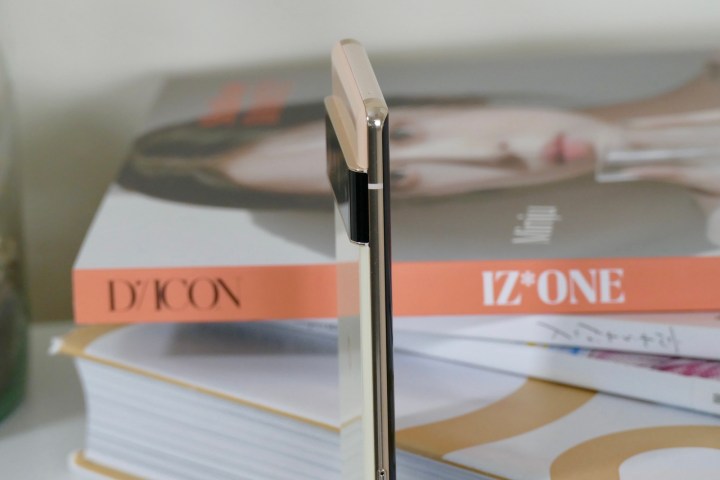
This is a 5G smartphone that connects to either Sub-6 or mmWave networks, depending on which version you buy. I’m testing the phone in the U.K. on the 4G and Sub-6 5G EE network. I have found the connectivity can be flaky, and on several occasions it has failed to maintain a data connection, despite showing a 4G or 5G link. I’ve noticed it has especially done so after I’ve been driving, which may suggest it’s struggling to switch between cell towers, and possibly 3G, 4G, and 5G as well. It’s not all the time and may also only happen in areas with poor coverage, but it’s something to note.
Once that period of adjustment was over, the battery life improved a lot.
Otherwise, call quality is very good, with clear voices and a loud speaker (although it’s a little awkward to find the sweet spot against your ear). I’ve also had no problems connecting Bluetooth earbuds or casting YouTube to my TV.
Price and availability
The Pixel 6 Pro starts at $899 and is available now through Google’s own online store, as well as various networks. In the U.K., the Pixel 6 Pro starts at 849 British pounds. Be prepared for a wait if you go to order one right now, though, as demand has been high and supply low.
Our take
The only thing stopping the Google Pixel 6 Pro from being an absolute, hands-down must-buy is the in-display fingerprint sensor. It’s the one technical feature that lets the whole thing down, and because there’s no face unlock to use instead, it means getting into the phone takes longer than it does on every other top smartphone available today. It’s a real shame, as once you’re in, it’s a superb experience.
Android 12 looks great, the screen is colorful and vibrant, and the camera is the best I’ve used on any phone for a while. That you have to resort to hacky workarounds to unlock the phone and get access to these wonderful things borders on cruelty. Exaggeration aside, I hoped that after the Galaxy S20 and Note 20 Ultra debacle, we’d passed the stage of making security annoying on smartphones, but sadly not. Fortunately, the camera does make up for it. The last camera I enjoyed as much as the Pixel 6 Pro’s was the Samsung Galaxy S21 Ultra’s, and I do think the 6 Pro’s photos are better in many ways than the S21 Ultra’s.
The Pixel 6 Pro’s many upsides mean I have learned to live with the fingerprint sensor’s inadequacy and other relatively minor annoyances, and the price is extremely competitive. too. If I were told it was $1,000, I wouldn’t think to question its value. It scores an 8/10 here, and that will rise to a 9/10 if the screen issues are solved and connectivity improved in an update, but this number perhaps doesn’t really reflect just how good the rest of the Pixel 6 Pro is, which is why there’s an Editor’s Choice award attached to it.
The Pixel 6 Pro is undoubtedly the best Google phone of recent years, and it’s so powerful and well supported that it will last you for years.
Is there a better alternative?
If you want the best camera phone available, our tests show the Pixel 6 Pro is the phone to get at the moment, although the Samsung Galaxy S21 Ultra and iPhone 13 Pro are still excellent and do have some unique features that set them apart. These two devices are the Pixel 6 Pro’s main competition, and we appreciate the S21 Ultra’s massive feature set and beautiful screen, and the iPhone 13 Pro’s power, ability, and excellent software. You won’t go wrong with any of these three phones.
How long will it last?
The Pixel 6 Pro screen has Gorilla Glass Victus over it, the back is covered in Gorilla Glass 6, and the phone has IP68 water and dust resistance, so it’s able to withstand a fair amount of rough treatment. However, due to the slippery body, I do still recommend putting it in a case.
Google promises major Android software updates on the Pixel 6 Pro until October 2024 and security updates until October 2026. This is one of the longest update schedules on any Android phone, beating even Samsung’s generous four years of security updates on its latest Galaxy phones. The Google Pixel 6 Pro will easily last three years before you need to consider upgrading, but for many, it could stretch out to five years without a problem.
Should you buy it?
Yes. The fingerprint sensor will annoy you, but the camera and performance are so good, and the price so reasonable, you’ll overlook it.
Editors' Recommendations
- A new Google Pixel Tablet is coming, but it’s not what you think
- Best Google Pixel deals: Save on Pixel 8, Pixel Buds, and Pixel Watch
- Google Pixel 8a: news, rumored price, release date, and more
- The Google Pixel 8a leaked again, and now I’m nervous
- This Google Pixel 8a leak just spoiled everything about the phone




















